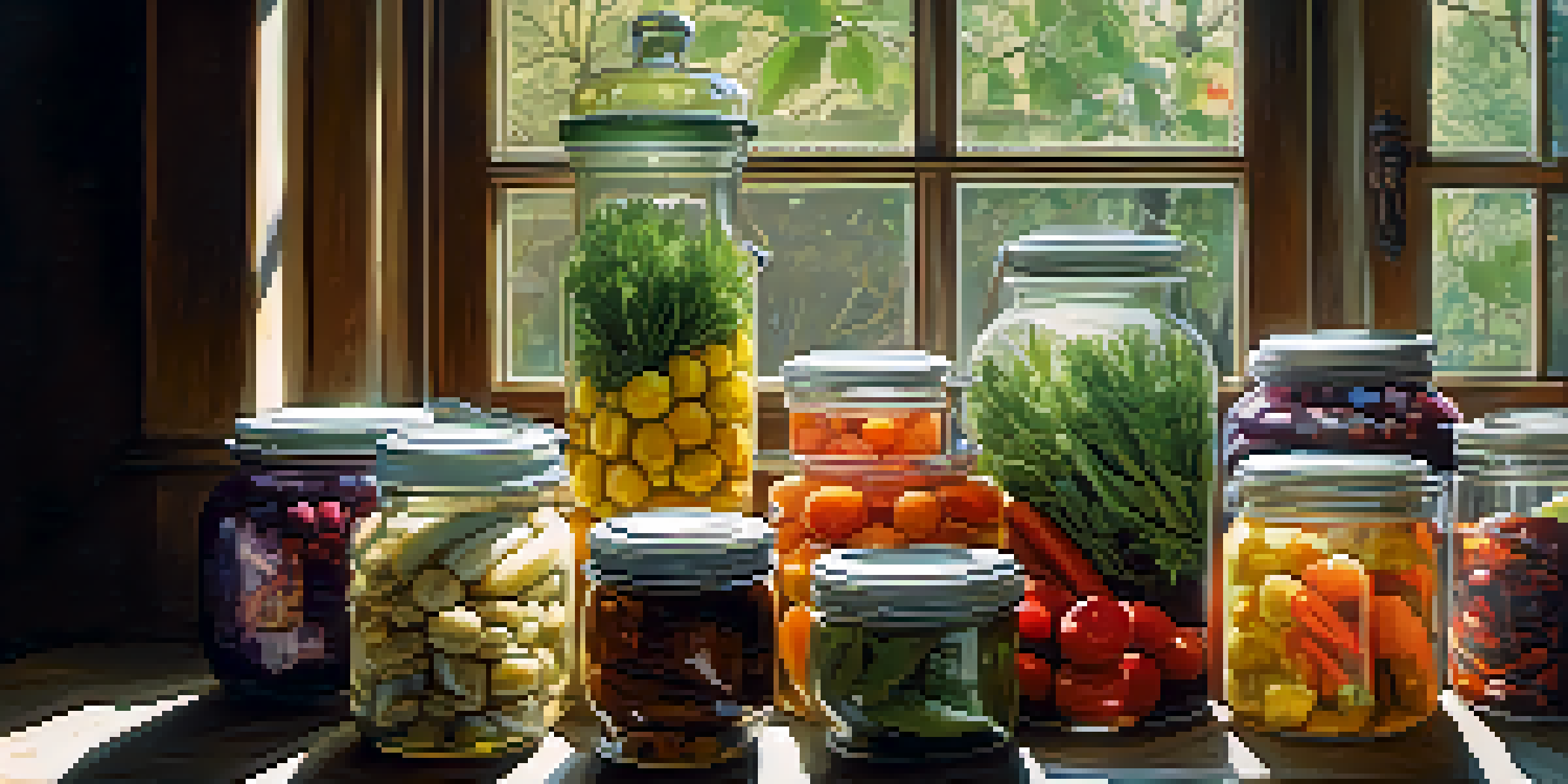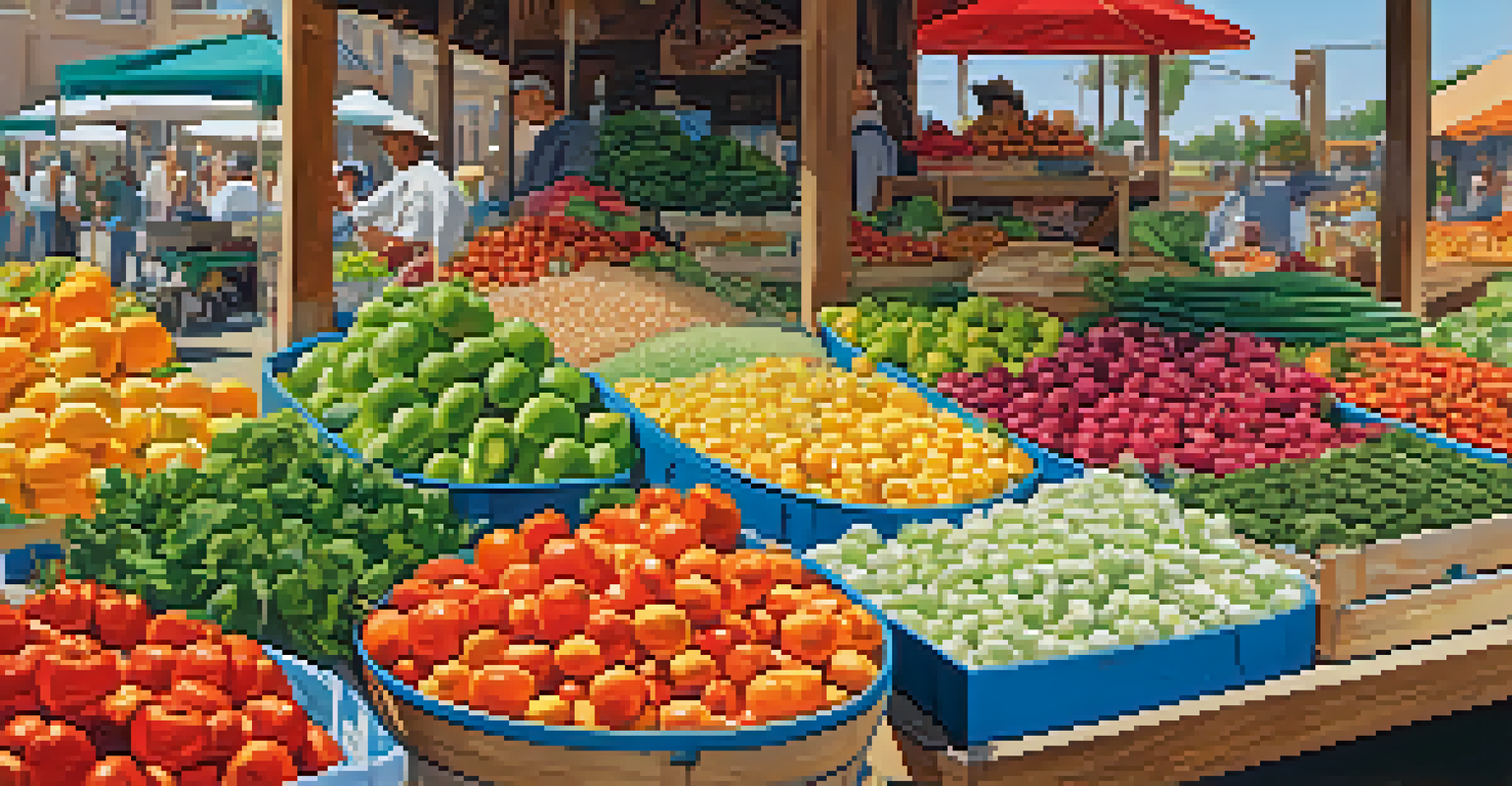The Role of Salt in Food Preservation Techniques

Understanding the Basics of Food Preservation
Food preservation is all about extending the shelf life of our favorite foods. It helps prevent spoilage and waste, making it essential for both home cooks and the food industry. By using various techniques, we can enjoy seasonal flavors year-round and ensure food safety.
Salt is the only rock we eat.
There are several methods of food preservation, such as drying, canning, and refrigeration. Each method has its own set of benefits and challenges. Among these, salt stands out as one of the oldest and most reliable preservation techniques.
Salt works by drawing moisture out of food, creating an environment that is inhospitable to bacteria and mold. This fundamental principle is what makes it a powerful tool in extending the freshness of perishable items.
The Science Behind Salt and Preservation
At the core of salt's effectiveness in preservation is osmosis, a process where water moves through a semi-permeable membrane. When salt is applied to food, it draws moisture from the food cells, effectively dehydrating them. This dehydration process inhibits the growth of spoilage-causing microorganisms.

Moreover, the presence of salt can also alter the pH level of food, making it less acidic. Lower acidity further deters bacterial growth, adding another layer of protection. This scientific approach is why salt has been utilized for centuries in various cultures around the world.
Salt Extends Food Shelf Life
Salt is a crucial preservative that helps inhibit spoilage and waste by drawing moisture out of food.
In many ways, the relationship between salt and food preservation is a perfect marriage of chemistry and tradition. It showcases how our ancestors harnessed natural resources to prolong the life of their harvests.
Traditional Methods of Salt Preservation
One of the most traditional methods of preserving food with salt is curing, often seen in the making of bacon or ham. Curing involves covering the meat with salt, creating a brine that pulls moisture out and infuses flavor. This method not only preserves the meat but also enhances its taste.
Preservation is the foundation of culinary creativity.
Another classic technique is pickling, where vegetables are submerged in a saltwater solution. This method not only preserves the veggies but also imparts a tangy flavor that many enjoy. From pickles to sauerkraut, the versatility of salt in preservation is on full display.
These traditional methods remind us of the importance of salt in our culinary history. They are not just practical but also have cultural significance, connecting generations through shared recipes and food experiences.
Salt's Role in Modern Preservation Techniques
While traditional methods are still prevalent, modern food preservation techniques have also embraced salt. For instance, in the canning process, salt is often added to enhance flavor and maintain texture in vegetables and meats. It helps ensure that the food remains palatable long after it has been sealed.
Additionally, salt is a key ingredient in brining, a process used for meats and poultry before cooking. Brining enhances moisture retention and flavor infusion, resulting in juicier, more flavorful dishes. This practice highlights how salt continues to play a crucial role in contemporary cooking.
Traditional and Modern Techniques
Both traditional methods like curing and pickling and modern techniques like canning utilize salt to enhance flavor and preserve food.
Even in the realm of processed foods, salt remains a staple. From snacks to sauces, it acts as a preservative while also enhancing taste, proving that its versatility is unmatched.
Exploring the Health Aspects of Salt Preservation
While salt is an effective preservative, it's important to balance its use with health considerations. High sodium intake can lead to various health issues, including hypertension. Therefore, understanding how much salt is in preserved foods is crucial for maintaining a healthy diet.
Some modern preservation techniques aim to reduce salt content while still ensuring food safety. For example, using vinegar in place of excessive salt can create a similarly preserved product with lower sodium levels. This innovation allows for a healthier approach without sacrificing flavor.
It's all about finding the right balance. While salt is an essential tool in food preservation, being mindful of its consumption can lead to healthier eating habits.
Innovative Uses of Salt in Food Preservation
Innovation in food preservation is constantly evolving, and salt continues to play a pivotal role. For example, the use of salt in fermentation has gained popularity, leading to products like kimchi and yogurt. These foods not only last longer but also offer probiotic benefits that support gut health.
Moreover, salt is being integrated into new preservation techniques such as vacuum sealing and sous-vide cooking. By incorporating salt into these processes, chefs can enhance flavor while extending the shelf life of their dishes. This modern twist showcases salt's continued relevance in the culinary world.
Health Considerations with Salt
While effective, it's important to balance salt usage in food preservation with health considerations, particularly regarding sodium intake.
These innovative approaches not only preserve food but also elevate the dining experience. They highlight how tradition meets modernity, allowing us to enjoy a variety of flavors and textures.
Conclusion: The Timelessness of Salt in Food Preservation
In conclusion, salt remains an indispensable element in food preservation techniques, bridging the gap between ancient practices and modern innovations. Its ability to inhibit spoilage while enhancing flavor is unmatched, making it a staple in kitchens around the world.
As we continue to explore new methods and prioritize health, the role of salt will undoubtedly evolve. However, its foundational principles will always play a critical part in ensuring our food is safe and delicious.

Whether you're curing meats or pickling vegetables, understanding the role of salt can enhance your culinary skills and appreciation for food preservation. After all, salt is not just a seasoning; it's a time-tested method of keeping our favorite foods fresh.